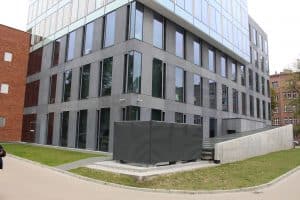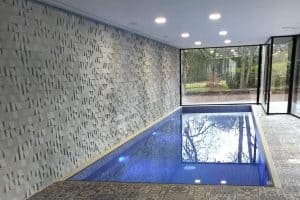GRC cladding panels are composite materials made from cement, sand, water, and glass fibers. They are a versatile and lightweight solution for building facades and are widely used in modern construction. GRC cladding panels offer several environmental advantages, making them a popular choice for sustainable building design.
The environmental advantages of GRC cladding panels
Reduced carbon footprint
GRC cladding panels have a low carbon footprint compared to other traditional building materials such as brick, stone, and concrete. The production process of GRC panels requires less energy and emits fewer greenhouse gases, making them a more environmentally friendly option. Moreover, GRC cladding panels have a longer lifespan, reducing the need for frequent replacements and further reducing their carbon footprint.
Energy efficiency
GRC cladding panels have excellent insulation properties, helping to regulate the temperature of the building’s interior. This reduces the amount of energy needed to heat or cool the building, leading to lower energy consumption and reduced greenhouse gas emissions. Additionally, GRC cladding panels can be designed with a variety of finishes that help to reflect sunlight, reducing the amount of heat absorbed by the building and further improving energy efficiency.
Low maintenance
GRC cladding panels require minimal maintenance, reducing the need for frequent cleaning, repainting, and repairs. This not only saves time and money but also reduces the amount of energy and resources required to maintain the building’s facade. Furthermore, GRC cladding panels are resistant to moisture, fire, and UV radiation, making them a durable and long-lasting option for sustainable building design.
Recyclability
GRC cladding panels are fully recyclable and can be reused in other construction projects. This reduces the amount of waste generated during the demolition and renovation of buildings and helps to conserve natural resources. Moreover, GRC cladding panels are made from sustainable materials such as cement, sand, and glass fibers, which are readily available and can be sourced locally, further reducing the environmental impact of their production and transportation.
Examples of sustainable buildings using GRC cladding panels
One Angel Square, Manchester
One Angel Square is a sustainable office building in Manchester, UK, designed by 3DReid architects. The building features a curved facade made from GRC cladding panels, which help to reduce the building’s energy consumption by reflecting sunlight and improving insulation. Moreover, the building has a rainwater harvesting system, a ground-source heat pump, and a combined heat and power plant, making it one of the most sustainable buildings in the UK.
Al Bahr Towers, Abu Dhabi
Al Bahr Towers are twin office buildings in Abu Dhabi, designed by Aedas architects. The buildings feature a unique facade made from GRC cladding panels that respond to the sun’s movement, opening and closing to regulate sunlight and heat. This innovative design reduces the buildings’ energy consumption by up to 50% and creates a comfortable and sustainable work environment for occupants.
Doha Tower, Qatar
Doha Tower is a landmark skyscraper in Qatar, designed by French architect Jean Nouvel. The building features a striking facade made from GRC cladding panels, inspired by the traditional Islamic moucharabieh screens. The GRC panels are designed to reduce solar heat gain and provide shading for the building’s interior, improving energy efficiency and reducing the need for artificial lighting.
GRC cladding panels offer several environmental advantages that make them a popular choice for sustainable building design. They have a low carbon footprint, excellent insulation properties, and require minimal maintenance, making them a durable and long-lasting option. Moreover, GRC cladding panels are fully recyclable and can be reused in other construction projects, reducing the amount of waste generated during





